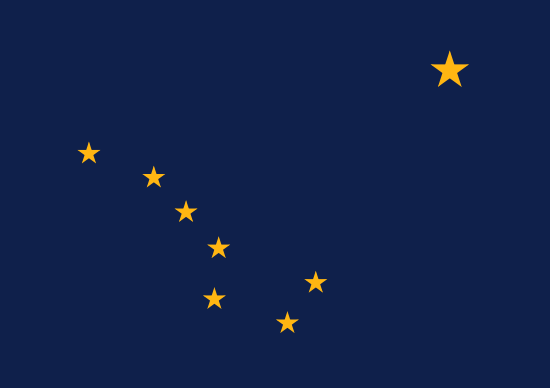
Alaska
- Statehood Year:
- 1959
- Capital:
- Juneau
- Largest Cities:
- Anchorage, Fairbanks, Juneau and
- Abbreviation:
- AK
Alaska is a state in the Pacific region of the United States, known for vast wilderness, towering mountains, and extensive coastline. It has a population of 743,756, making it the 48th most populated state in the country. The capital city is Juneau. Alaska has a resource-based economy centered on oil, fishing, and tourism.